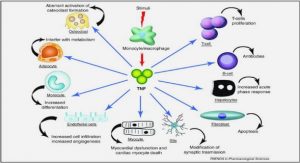Get Complete Project Material File(s) Now! »
Exodus of clergy
There is an increasing shortage of clergy. The Roman Catholic Church is certainly experiencing it (cf Schoenherr & Sorenson 1982:23; Heilbronner 1998:11; Tentler 1998:348; Carroll 2001:1; Fernandez 2001:ix-x; see Seidler 1979:764; Berger 1987; Hoge et al 1988:264,280). Schoenherr & Young (1993:76) predicted a 40% reduction in active priests in the United States Catholic Dioceses between 1965 and 2005 (cf Wallace 2003:256). McCloskey (2006) states that since 1965 there has been a decline in priests from 58000 to 41000. Projections are that by 2020 there will only be 31 000 and half of them will be over 70 years old. This decline is occurring while the Roman Catholic population in the USA has increased from 45.6 million in 1965 to 64.8 million in 2005, a rise of almost 50%. In contrast, the number of seminarians fell from 50000 in 1965 to an approximate 5000 in 2005, a decline of 90% (McCloskey 2006, cf Dunbar 2009:374). In a survey done with 5 000 pastors, 40% said they considered leaving the ministry within the last three months (London & Wiseman 1993:25). The shortage of clergy is not only seen in academic studies but also in the media. Local newspapers in the USA such as The Milwaukee Journal concur that there is a “white collar vacancy” (1987, p 2G). More recently, The New York Times reported that the shortage of priests was the main topic of the first gathering of bishops with Pope Benedict XVI (2005). US News concurs that there is a priest shortage (2008). The effects of the shortage are experienced by all but most notably by those that are dying and who require last rites or extreme unction (cbsnews.com, 2010).
Pastoral perspectives
Generating theory is the hallmark of grounded theory methodology and idea manufacturing is the methodical description of what goes on in theory formation (Pleizier 2010a:85). Concerning generating ideas Glaser (1978:9) states “grounded theory is ideational; it is a sophisticated and careful method of idea manufacturing. The conceptual idea is its essence…. The best way to produce is to think about one’s data to generate ideas”. Grounded theories are constructed through “past and present involvements and interactions with people, perspectives, and research practices… any theoretical rendering offers an interpretive portrayal of the studied world, not an exact picture of it” (Charmaz 2006:5). How these ideas are manufactured requires a context for justification which “argues for the legitimacy of procedures, analyses, and results of research” (Pleizier 2010a:86). The context for justification “examines how a problem is methodically examined. It is here that systematic and controlled work takes place. It is governed by rules, that is, along exactly laid out steps” (Ziebertz 2005:294). Pleizier (2010a:86) accurately states that “the context for justification is not a neutral, value-free environment in which (mainly statistical) procedures produce an account of hard facts but there is a continuous interaction between researcher and object of research”. This section is a description of how this interaction has taken place and shaped the generation of a theory of clergy exodus (responding to the call).
CHAPTER 1: BACKGROUND, PROBLEM STATEMENT AND AIMS
1.1 Problem statement
1.2 Practical theological perspectives
1.3 Epistemological perspectives
1.4 Research gap: Reasons for shortage of clergy
1.5 Research plan
CHAPTER 2: GROUNDED THEORY IN PRACTICAL THEOLOGY
2.1 Abductive reasoning
2.2 Characteristics
2.3 Grounded theory in practical theology
CHAPTER 3: GROUNDED THEORY APPLIED
3.1 Interviewing
3.2 Pastoral perspectives
3.3 Generating theory
3.4 Encoding
3.5 Summary
CHAPTER 4: CLERGY SHORTAGE RECONSIDERED
4.1 Building a conceptual framework
4.2 Open coding
4.3 Axial coding
4.4 Selective coding
4.5 A precursive theoretical model
4.6 The core category
4.7 Theoretical coding
4.8 Theological reflection
CHAPTER 5
FINDINGS
BIBLIOGRAPHY






